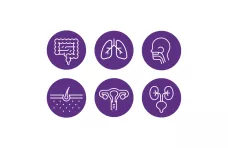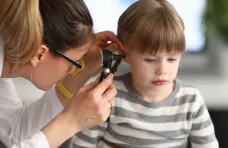Finland 2025: knowledge and behaviors about microbiota
The survey was conducted by Ipsos among 7,500 people in 11 countries (France, Portugal, Poland, Finland, Italy, Germany, United States, Mexico, Brazil China, and Vietnam).
Finland and microbiota:
quiet awareness, natural practices, untapped potential
Summarizing Finland's results in the survey
In 2025, Finland shows a unique profile within the International Microbiota Observatory. While awareness of the microbiota remains low, many Finns naturally adopt microbiota-friendly behaviors—often without knowing it. Healthcare professionals are widely trusted, yet underutilized when it comes to microbiota education. Interest in testing and prevention is emerging, even though stool donation remains unfamiliar to most.
1. Finland lags when it comes to microbiota understanding
In 2025, microbiota awareness in Finland remains among the lowest across surveyed countries.

Only 46% of Finns report having heard of the term "microbiota" is (vs 71% overall). Even the more familiar terms “gut flora” (73%) and “vaginal flora” (63%) fall below the global average (91% and 79%, respectively).
Finish knowledge of specific types—such as gut (38%), vaginal (32%), or skin microbiota (36%)—is very limited. Also, dysbiosis is largely unknown: 85% have never heard of it.
Despite these knowledge gaps, recognition of microbiota-related products is somewhat better:
of Finns are familiar with probiotics
of Finns have heard of prebiotics
However, precise understanding remains limited. These results are comparable to 2024, confirming that awareness is still progressing slowly.

Learn all about microbiota
Learn more
2. Healthy habits without intentional change
In 2025, only 39% of Finns report actively changing their lifestyle to improve their microbiota balance (vs 56% overall). Yet, many naturally adopt behaviors that are favorable to microbiota health, and only 9% do so a lot (vs 16% overall).

Most Finns engage in regular physical activity (83%) and avoid smoking (69%). Moreover, 70% avoid showering more than twice a day—helping preserve the skin microbiota.

A large majority follow a healthy, balanced diet (88%) and limit ultra-processed foods (65%).

Microbiota & sport: competitive micro-organisms
Find out more...However, supplementation remains rare: 76% do not use probiotics (vs. 49% overall) and 81% do not use probiotics (vs. 41% overall). These results confirm a trend already observed in 2024: a population with healthy routines, but still hesitant about microbiota-targeted products.

3. Healthcare professionals, a trusted voice still underused
In 2025, healthcare professionals are considered the most trusted source of information on the microbiota by 83% of Finns—well above other sources (vs. 78% globally).
Yet, this trust is not matched by the level of communication: only 7% of respondents say they first heard of the microbiota in a healthcare setting.
Concrete actions remain rare during medical encounters.

Just 18% have been informed by a professional about the role and functions of microbiota, and only 23% were told about the importance of maintaining its balance.
A large majority (80%) have never received guidance on good habits to support it, and 81% have never been prescribed probiotics or prebiotics.
Similarly, only 15% were made aware of the microbiota-disrupting effects of antibiotics at the time of prescription.

Antibiotics: what impact on the microbiota and on our health?
Learn moreWhen information is shared, it often comes from nurses or physician assistants (36%), rather than doctors. These findings highlight a missed opportunity: Finnish healthcare providers are trusted, but not yet fully mobilized to educate on this key health topic.

4. Stool donation: rarely known, cautiously considered
In 2025, stool donation and microbiota testing remain little-known in Finland. 88% of respondents say they have never heard of stool donation, and only 44% express interest in undergoing a microbiota test (vs 61% globally).
- Among those who are open to testing, the focus is overwhelmingly on the gut microbiota (91%).
- The main motivation cited is the desire to identify lifestyle and nutritional factors that could influence the microbiota and lead to chronic diseases (57%).
These results highlight both a limited awareness of stool donation and a more preventive, self-care–oriented mindset among those already engaged.
What is microbiota testing and mapping?
There are different types of microbiota testing, not only for the gut. Overall, they seek to identify microorganisms, such as bacteria and fungi, living in a specific part of the body to help inform health decisions and/or outcomes.
Intestinal microbiota testing, which seems to be the most common type of analysis, generally tests a person’s stool sample. For example, they could look for illness markers or extract DNA.
Both collective and individual gut microbiota analyses start with a stool sample. Microbiota mapping aggregates results from multiple microbiota tests to advance research and fight chronic diseases. Individual tests provide personal data on gut flora, with no definition of a clinically validated “healthy” or “pathological” microbiota. Thus, mapping fuels population-level knowledge, while testing gives a snapshot of one’s own microbiota.

Gut microbiota: still many things to be discovered
Find out more...
Methodology
This third edition of the International Microbiota Observatory was conducted by Ipsos on 7,500 individuals across 11 countries (France, Portugal, Poland, Finland, Italy, Germany, the USA, Brazil, Mexico, China, and Vietnam). Two new countries were included in this edition: Italy and Germany.
The survey was conducted over the Internet between January 21 and February 28, 2025. For each country, the sample is representative of the population aged 18 and over in terms of :
- gender
- age
- profession
- region
Representativeness was ensured via quota sampling, the most commonly used sampling method for obtaining a representative sample of the population studied. The quota variables for each country were gender, age, region, and socio-professional category. The data were adjusted:
- within each country, again to ensure that each population is representative
- globally, so that each country has the same weight. Statistical analyses were carried out using Cosi software (M.L.I., France, 1994), with a significance level of 95%
The survey population was 48% male and 52% female. The average age was 43.7 years. The sample of 7,500 individuals made it possible to carry out a detailed analysis by age group:
- 18-24
- 25-34
- 35-44
- 45-59
- 60 and over
Changes from one year to the next have been measured on a like-for-like basis, i.e. calculated taking into account only those countries present in both the first and second editions of the survey. While we do have results for the new countries included in this third edition (Germany and Italy), they have not been taken into account when calculating trends, since they were not included in the first two editions of the survey.
The questionnaire includes 16 questions on:
- socio-demographic data
- the level of knowledge about microbiomes
- the level of and desire for information from healthcare professionals
- the identification and adoption of behaviors designed to combat microbiome imbalances
- the level of knowledge, information, and behaviors of women about the vulvo-vaginal microbiome
- health data
The questionnaire lasted ten minutes and the 7,500 individuals had to complete the entire questionnaire in order to be included in the survey. The terms used in the questionnaire to talk about the microbiome have been translated and adapted to the terms used in each country.


